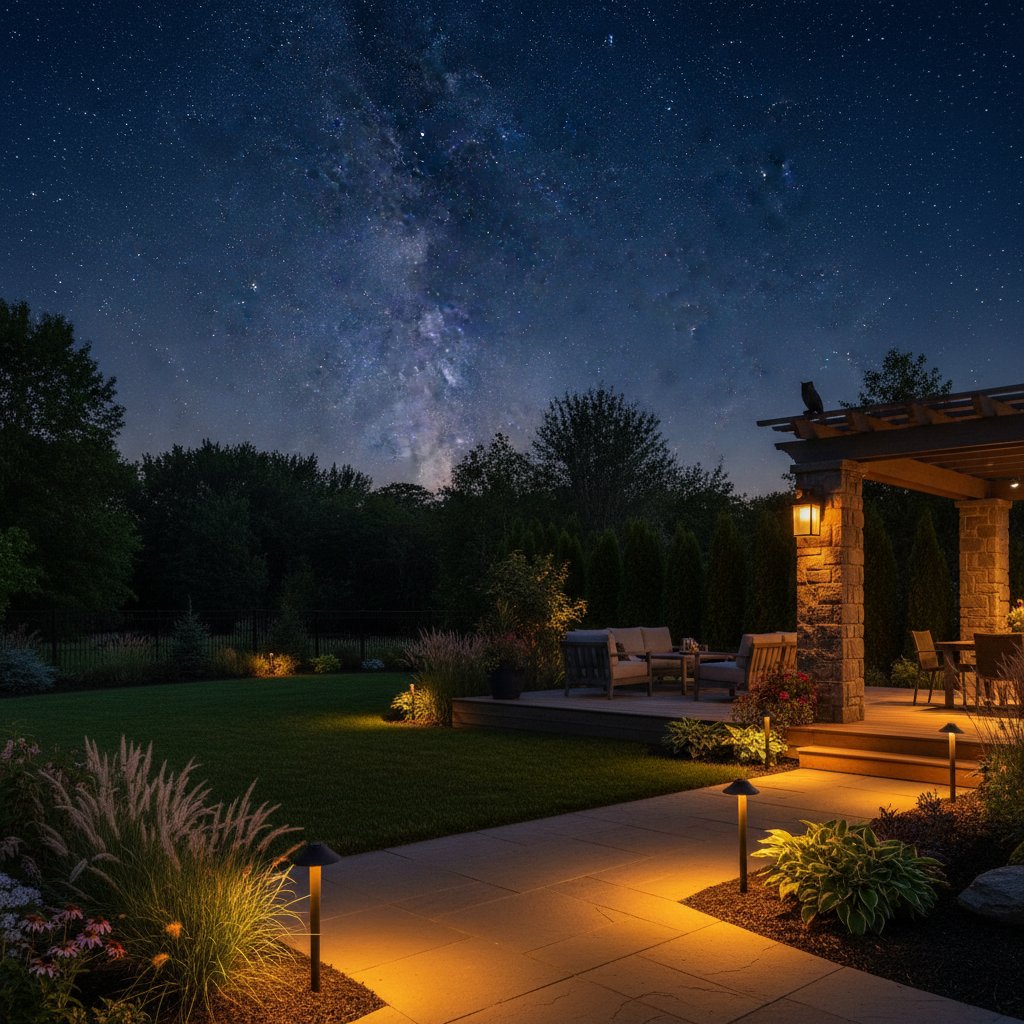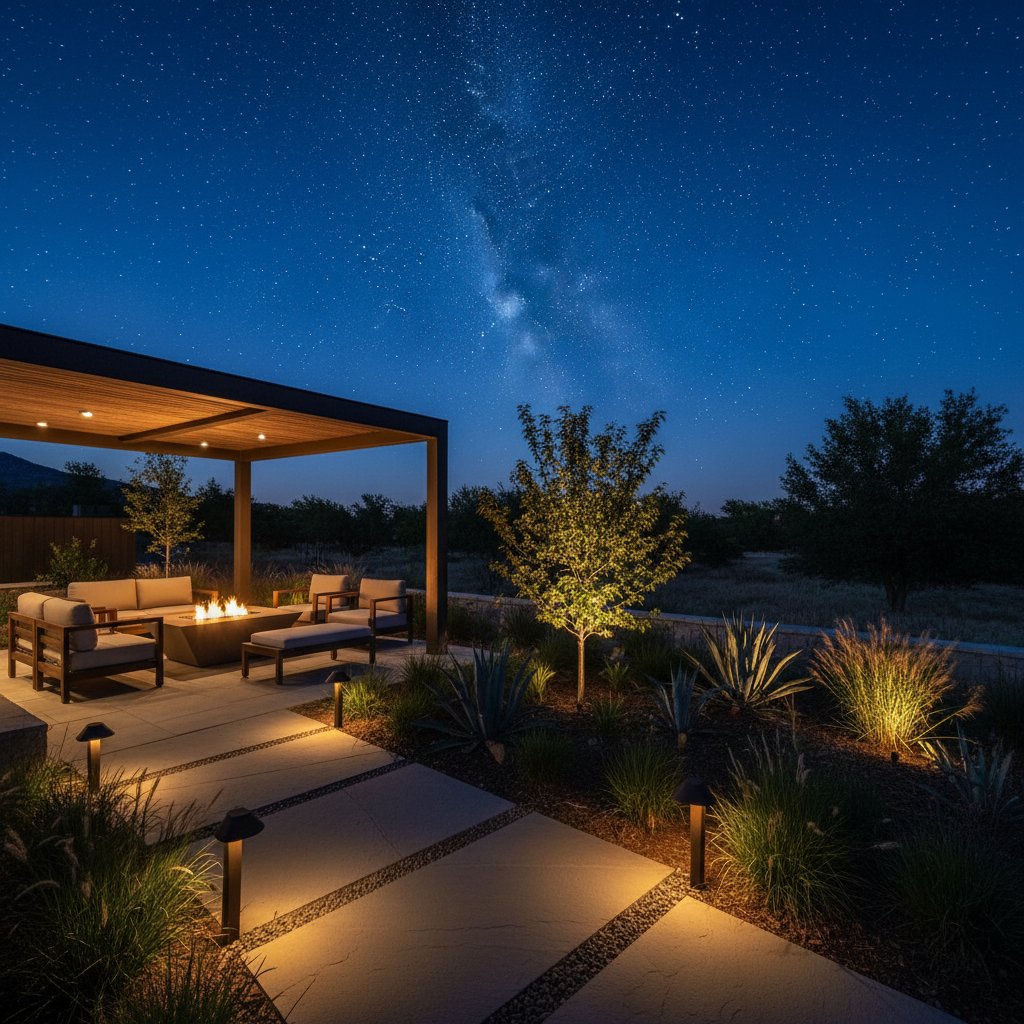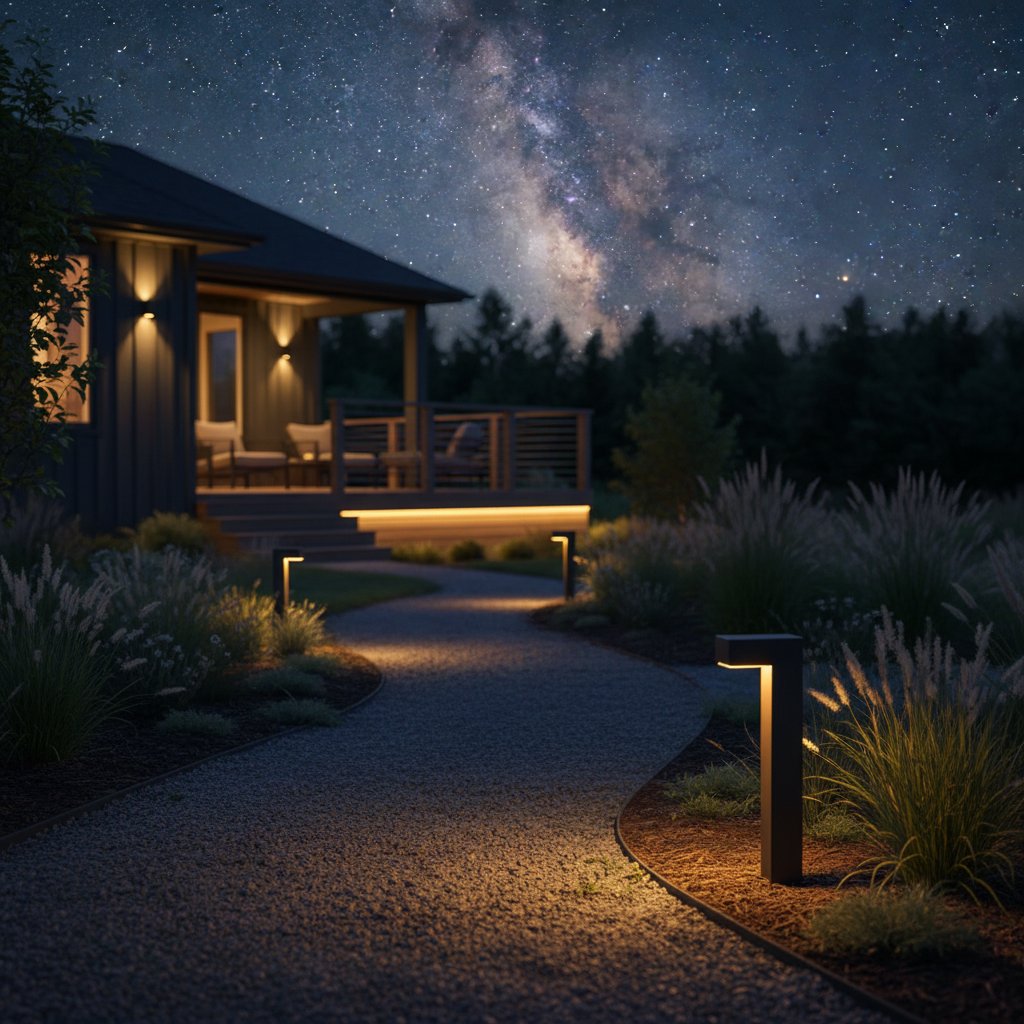Low-Glow Lights: Eco Designs for Starlit Yards in 2025
There is a special kind of quiet that settles over a garden at night. The air feels cooler, the colors soften, and every sound seems to linger a little longer. In that calm, a single light can change everything. Too much brightness flattens the shadows and hides the stars. Too little, and the beauty of a path or stone wall disappears into darkness. The art of low-glow lighting lives somewhere between those two places, where the night still feels like night but the landscape remains visible, inviting, and alive.
Low-glow lighting is not about flooding the outdoors with light. It is about creating a gentle presence that respects the natural rhythms of the evening sky. As more homeowners look for ways to reduce light pollution and conserve energy, this approach has grown from a niche idea into an essential part of modern outdoor design.
Understanding the Low-Glow Philosophy
At its heart, low-glow design is guided by restraint. It asks us to see lighting not as decoration but as an extension of the landscape itself. The goal is to highlight texture, form, and movement without overpowering them. A low-glow yard feels calm and balanced, where every light serves a purpose and every dark corner still belongs to the scene.
This philosophy comes from a growing awareness of how artificial light affects the world around us. Excessive lighting disrupts nocturnal wildlife, confuses migrating birds, and obscures the stars that connect us to the wider universe. By choosing low-glow fixtures and thoughtful placement, we can protect those experiences while still enjoying beauty and safety after sunset.
The Science of Dark-Sky Lighting
Dark-sky lighting is a term used for fixtures designed to prevent light from escaping upward into the night sky. The idea is simple: direct the light exactly where it is needed, and nowhere else. This approach reduces glare, saves energy, and preserves the visibility of stars above.
A well-designed dark-sky fixture typically includes:
- Shielded housings that block upward and sideways light.
- Warm color temperatures, which produce a softer, amber tone instead of harsh blue-white light.
- Adjustable brightness, allowing you to fine-tune illumination levels throughout the evening.
- Smart controls that dim or switch off lights automatically when not in use.
These features blend technology with sensitivity. They let homeowners enjoy their spaces while keeping the night sky visible and healthy.
Choosing the Right Fixtures for a Starlit Yard
When planning a low-glow lighting design, the first step is to decide what truly needs illumination. Think of lighting as a conversation between light and shadow. The darker spaces are just as meaningful as the bright ones.
Start with priority areas such as walkways, entries, and gathering spots. Then look for opportunities to add subtle highlights where texture or shape deserves attention. Some reliable choices include:
- Path lights with downward shades that cast a soft pool of light directly on the ground.
- Recessed step lights that make stairs safe without spilling brightness across the yard.
- Wall-mounted sconces with full cutoffs that wash surfaces rather than projecting outward.
- Small spotlights used sparingly to reveal key plants or stone features.
Avoid fixtures that spread light in all directions or use exposed bulbs. These create glare and waste energy. Instead, aim for lights that seem to belong to the landscape, not compete with it.
Warmth, Color, and Texture
Light color can change the entire feel of a garden. Cool white light tends to flatten natural tones, while warmer hues bring out depth and richness. A slightly golden glow feels more organic and more comfortable for evening gatherings.
Homeowners often find success using LED bulbs labeled as “soft white” or “warm white.” These usually fall toward the amber end of the spectrum, which is friendlier to wildlife and easier on human eyes at night.
Texture also plays a role. Rough stone, bark, and foliage all respond differently to illumination. Try experimenting with angle and distance to find how the light interacts with each surface. A narrow beam can make a tree trunk look dramatic, while a wide wash can turn a hedge into a quiet backdrop. Small adjustments matter more than most people expect.
Integrating Technology with Sensibility
Smart lighting systems have matured to a point where they can enhance low-glow design without adding complexity. Many homeowners now use sensors that respond to motion or ambient light levels. When no one is outside, the lights fade or turn off entirely. This simple step can cut energy use dramatically while allowing the yard to return to darkness between uses.
Some systems also allow zoning, meaning different areas can follow different schedules or brightness settings. For instance, a pathway might stay softly lit all night, while garden accent lights turn off automatically after a certain hour. The result is a landscape that feels dynamic yet quietly respectful of the night.
Designing with Purpose and Restraint
Every successful lighting design starts with purpose. Before installing a single fixture, take a walk through the yard after dark. Notice where you feel comfortable and where you hesitate. Observe which shapes disappear completely and which catch the faint moonlight. These observations guide better decisions than any catalog or trend list.
A few guiding principles can help:
- Focus on function first. Light what you need for safety or navigation, then add only what enhances beauty or mood.
- Keep brightness low. Use the least amount of light that still feels comfortable. Your eyes will adjust naturally.
- Group fixtures by theme. Repeating similar shapes or finishes helps create cohesion without monotony.
- Mind reflections. Water, glass, and polished stone can multiply light in unexpected ways, so aim fixtures carefully.
- Think about the view from indoors. Outdoor lighting should complement what you see through windows, not compete with it.
These ideas encourage slower, more deliberate choices. The best lighting design rarely happens all at once. It evolves with observation and small adjustments over time.
The Emotional Dimension of Low-Glow Design
There is something deeply personal about how we experience light in a garden. A softly illuminated path can feel welcoming after a long day. A dim, steady glow along a fence can create a sense of calm that bright floodlights can never match. People often describe these spaces as peaceful or restorative. That feeling comes from the balance between visibility and mystery.
Low-glow design invites a slower pace. It encourages noticing how the breeze moves through leaves or how shadows lengthen across stone. It allows the night to be part of the design, not an absence to be filled. For many homeowners, this shift in mindset is just as rewarding as the energy savings.
Working with Professionals
A landscape lighting designer or experienced installer can help translate these ideas into a practical plan. They understand voltage, spacing, waterproofing, and the small details that keep a system reliable. More importantly, a good designer listens. They will ask how you use your yard, when you spend time outside, and what you hope to see at night. That conversation often leads to simpler, more elegant solutions than you might imagine.
If hiring a professional is not an option, start with a few test fixtures and experiment. Temporary solar lights or low-voltage kits can help you understand how light behaves before committing to permanent wiring. This trial-and-error process teaches far more than diagrams on paper.
Balancing Light with Nature
The purpose of low-glow lighting is not to make the outdoors brighter but to make it livable without losing its magic. True success comes when you can step outside, see the outline of your garden, and still spot the Milky Way above. That balance benefits more than aesthetics. It supports nocturnal insects, birds, and pollinators that depend on darkness to thrive.
Choosing eco-friendly materials for fixtures adds another layer of care. Recycled metals, solar-powered components, and long-lasting LEDs reduce waste and maintenance. When combined with careful placement and dimming controls, these choices create a sustainable system that honors both design and ecology.
Living with Your Design
Once your low-glow lighting is installed, the relationship with it continues. You might notice that certain lights feel too bright after a few weeks or that others fade into the background too much. Adjusting angles, changing bulbs, or adding shields can fine-tune the atmosphere. Seasonal shifts also matter. Trees grow fuller, flowers bloom and fade, and shadows change length. Revisiting your lighting plan every season helps it stay consistent with the landscape’s evolving shape.
Maintenance is simple but worthwhile. Keep lenses clean, check for moisture in fixtures, and trim foliage that blocks light paths. These small efforts keep the system efficient and the design intentional.



